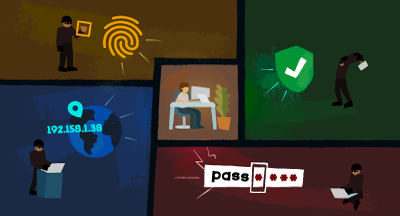Where Have All the Subs Gone?
#Culture
Leslie Strong
by
Leslie Strong

|
Leslie Strong Director of Project Management |

|

|

|
 |
This common fear has become a real-life daily problem for many leaders as they try to fill a growing list of absences with a shrinking substitute teacher pool.
Let’s find out the facts about the missing substitute teachers and discover some creative ways to make sure every classroom is led by a qualified teacher every hour of the day.
The Problem
Openings that used to be snatched up right away now sit unfilled. Teachers and principals spend valuable free hours stepping in to teach classes, and in some cases, students go without a teacher for months at a time. Philadelphia Public Schools will offer summer school for more than 2,500 of their students who lacked a qualified teacher – full-time or substitute – for more than 2/3 of the 2015-16 school year.So what has brought about this scarcity?
In short – the perfect storm.
The demand for subs has gone up due to increased professional development and training requirements. The number of students graduating with education degrees is dropping steadily – you may have already seen a decrease in the number of applicants for full-time teaching positions, leaving fewer eager candidates available to sub. Low pay, little recognition, and insufficient training don’t help the situation either.
An improving economy and a more dynamic job market give potential sub applicants more options than they’ve had in recent years – and in substitute teaching, the perks often pale in comparison to the challenges.
The Statistics
So how bad is the shortage? Let's take a look at the state of substitute teaching around the country:11: Average number of days per year teachers are out of the classroom, according to a 2014 National Council on Teacher Quality study.
48: Percentage of schools facing a “severe or somewhat severe” shortage of substitutes in 2013.
$12.90: Median hourly wage for substitutes. This would amount to just $18,576 in gross pay for a substitute teacher who manages to work 180 days in a school year – a rare feat.
62: Percent drop in Pennsylvania state residents who sought teaching certificates in the past 3 years. A similar decline can be seen across the country, and candidates who might have previously spent a year or two subbing after graduation are now needed to fill full-time positions.
The Solutions
Although there isn’t one magic solution, there are steps you can take that make a difference. Let’s take a look at four of them:Become known for exceptional service: It has been said that every day is like the first day of school for substitute teachers – new faces, new names, new expectations. Build your reputation as a district that goes above and beyond to make sure subs feel prepared and appreciated.
- Provide an orientation, a tour, and a casual welcome event.
- Invite subs to participate in development workshops with current teachers.
- Offer free lunch, event tickets, and athletic passes.
- Recognize excellent subs! Consider naming your shining stars “Substitute Teachers of the Year” and nominate them for the national prize.
- Make personal calls to invite retired teachers, student teachers, regular teaching applicants, and other community-minded individuals to substitute in your district.
Maintain firm guidelines: Glenn Clayton, author of “Running Out of Subs: Doing More with Fewer Teachers,” advises districts to manage their existing workforce well in order to improve fill rates. Clayton says that this might include setting a minimum number of days for subs to work in order to stay in the sub pool. He also advises firming up rules for no-shows and cancellations and requiring a 90+ minute notice from teachers requesting subs.
You can also work to reduce the overall number of substitutes needed by reviewing your teacher attendance data. Some districts are loosening limits on summer professional development, avoiding planning professional development on hard-to-fill days, and keeping a closer eye on teacher absenteeism.
Ditch “one-rate-fits-all” pay plans: Low pay is a fundamental reason for the substitute shortage, and it’s also one of the most difficult factors to address. To attract qualified subs to your district, competitive base pay is critical, and a more creative pay structure might help, too.
Small changes in the way you pay your subs can address your biggest pain points without breaking your budget. In Michigan, Constantine Public Schools has hired four permanent substitute teachers at $15 above the standard daily rate. Superintendent Steve Wilson says the $15 extra is “money well spent, having the security of knowing we have good people in place every day to fill in.”
Substitute shortages result from a wide variety of factors, so the solutions must be equally varied. Take steps today to hire excellent subs. Treat them well, and your students will reap the benefits.

|
Leslie Strong Director of Project Management |
|
|

|

|

|
 |










